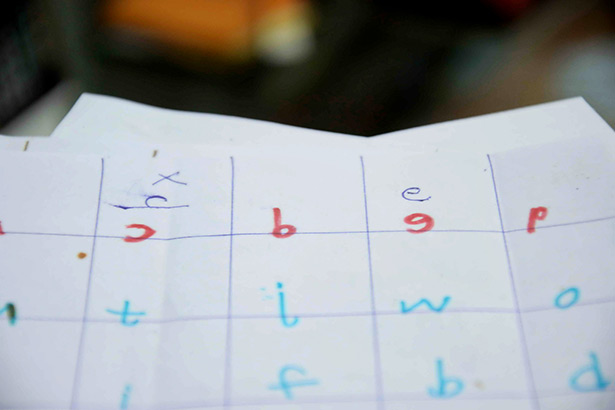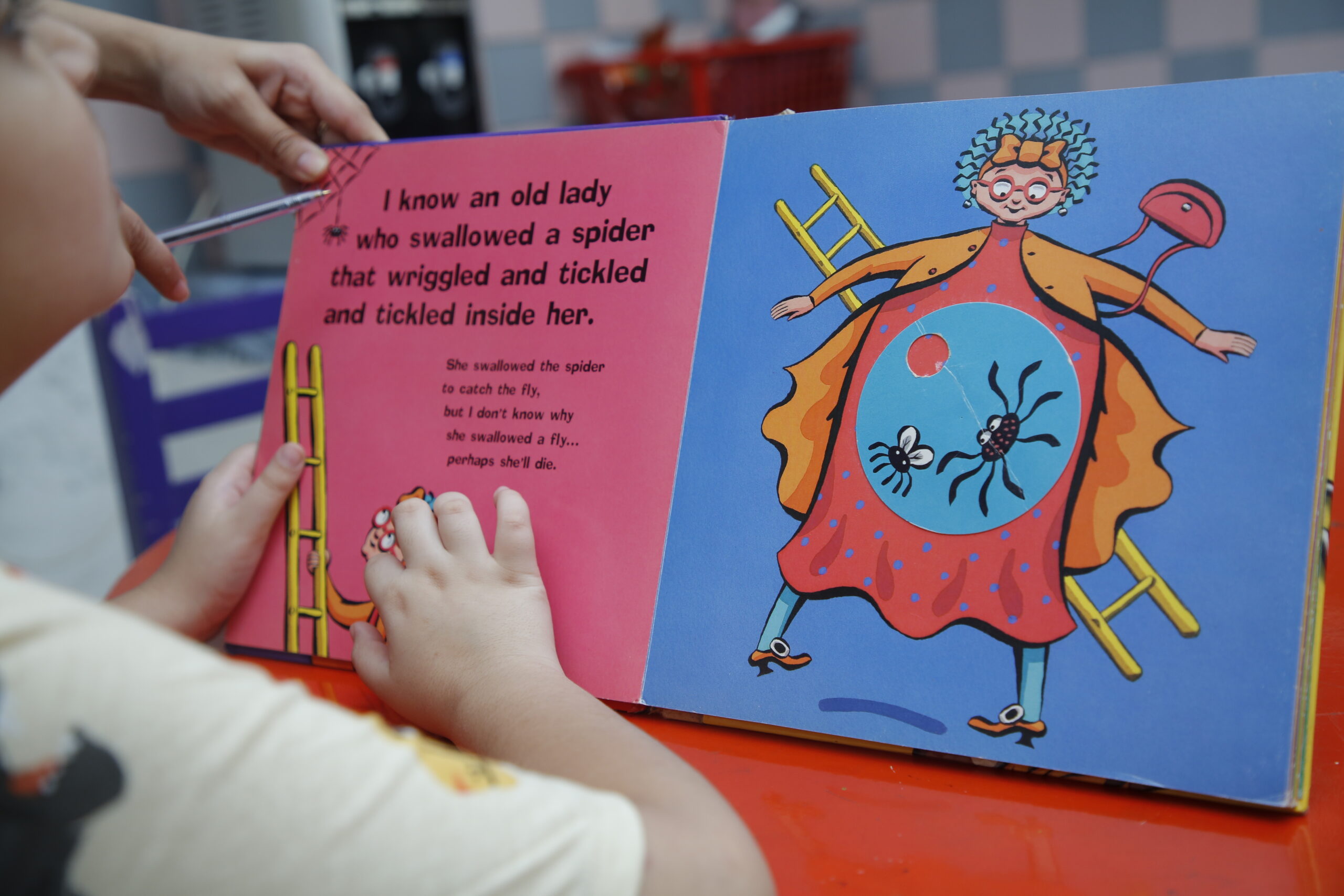Dyslexia is a complex neurological condition that is constitutional in origin. The symptoms can be defined as a particular difficulty in reading, spelling, and written language, and they can affect many areas of learning and work. One or more of these areas may be affected-numeracy;

notational skills music, motor function, and organizational skills also are involved. However, it is most closely linked to mastering written language, though oral language may also be influenced to some extent, according to ‘The Dyslexia Handbook.’
Despite receiving standard instruction, possessing at least average intelligence, and enough opportunities to learn, children with dyslexia have trouble learning to read. It’s triggered by a problem with the brain’s ability to interpret images from the eyes or ears into words that can be understood. It isn’t caused by a lack of vision or hearing.
It’s not because of mental retardation, brain damage, or a lack of intelligence. It should not be misinterpreted as laziness, stupidity, or a lack of interest. It’s more than just reversing letters, numbers, and words. It is not curable, but definitely manageable for the lifetime. It’s likely that classroom teachers won’t be able to determine whether a student has dyslexia. They can notice early symptoms that indicate that a clinical psychologist should be consulted in order to properly diagnose the condition.
The major symptoms include:
- Mixing up sounds in multisyllabic words animal for animal, Kafish for Kashif
- Inability to rhyme by age 4
- Inability to correctly complete phonemic awareness tasks
- Difficulty in learning the names, letters, and their sounds
- Difficulty in writing the alphabets in order
- An unusual way of forming letters, unusual beginning, and ending points
- Difficulty with fine motor tasks as tying shoes, buttoning, and unbuttoning, etc
- Confusion of left versus right, over versus under, before versus after dab for bad, was for saw
- Lack of dominant handedness
- Difficulty in copying from the board or a book can also suggest problems.
- There may be general disorganization of written work.
- A child may not be able to remember content, even if it involves a favorite video or storybook. Problems with spatial relationships can extend beyond the classroom and be observed on the playground.
- The child may appear to be uncoordinated and have difficulty with organized sports or games. Difficulty with left and right is common, and often dominance for either hand has not been established.
- Reversals and substitutions of letters and numbers 6/9, b/d, p/q, f/t such reversals are fairly common up to the age of 7 or 8 and usually diminish by that time.
- Delayed speech, not any words by the first birthday
- Lots of allergies or stronger and more severe reactions to childhood illness than other kids
- Possibility of having ADHD/ADD or other behavioral problems
In the early grades of schooling, dyslexia can go undetected. The difficulty in learning to read can frustrate the child, and other issues can emerge that disguise dyslexia. The child may show signs of low self-esteem and low -confidence Both at home and at school, behavioral issues are frequently seen. The child will lose interest in school and become unmotivated. If the issue is not resolved, the child’s success in school beats risk. A child with dyslexia may go unnoticed for several years and yet get criticized by their teachers and parents for the mistakes they made. This will cause a child to be confused about himself or herself; they will try their hardest to solve these issues in their own unique way, but the end result will be the same. As a result, this child will develop a negative attitude toward his or her parents, school, and studies, finally giving up on making any effort.
Reading and spelling
- Slow, labored, inaccurate reading of single words in isolation when there is no story or pictures to provide clues
- When reading aloud, read slowly, ignore punctuation and intonation
- Become visibly tired after reading for only a short time
- Reading comprehension may be low due to spending so much energy trying to read the words. Listening comprehension is usually better than reading comprehension
- Misreads omit or even adds small function words, such as an, a, from, the, to
- Frequently reverses letters bog for the dog, name for a man
- Substitute a similar-looking word, even if it changes the meaning of the sentence- sunrise for surprise, house for horse
- When reading a story or a sentence, substitutes a word that means the same thing but does not look at all similar travel for journey, fast for speed
- Omits or changes suffixes, such as the need for needed, late for lately
- Difficulty in pronouncing even familiar words; merlin-remain
- If readers look away from the page he will be slow in finding his place
 Writing
Writing
- Foreshortening: remember – remember
- Repetition of a word
- Capitals left out or in the wrong places
- i’s not dotted, t’s not crossed
- Badly formed letters, or if the shape is correct, formed in an unconventional way
- Difficulty in keeping on the line
- Each line starting further from the margin
- New paragraphs not indented
- Omissions of punctuations
Treatment of Dyslexia
Dyslexia is a life-long disease that can be managed. Dyslexics must be diagnosed at a young age in order to obtain the best possible treatment. People with dyslexia can improve their reading and writing skills with the right assistance. The majority of people with dyslexia need the assistance of a professional therapist who employs a multisensory, formal language approach. It is beneficial for dyslexic students if their clinicians collaborate with their teachers in the classroom. Schools can implement academic modifications to help dyslexic students succeed. A student with dyslexia, for example, maybe given additional time to complete activities, assistance with note-taking, and/or necessary job assignments. Teachers may administer taped tests or allow dyslexic students to use alternative means of assessment Listening to books on tape and writing on computers will also help students.
- Give less homework shorter essays, or underline main points to learn
- Mark written work on content Note spelling
- Mark on oral responses when possible
- If reading long words, divide syllable with a pencil line
- Put the child in front of the class so you can help
- Check whether he/she knows the alphabets, and can say the days of the week and months of the year in their right sequence; also, whether he/she can tell the time
What does IMPACT do?
in reading, writing, spelling, comprehension, mathematics, and other areas.
Our expert conducts one-on-one sessions in a private environment with minimal distractions. We create an individualized educational plan for each child based on their specific needs. To overcome these problems, we employ a multisensory approach.
Children at IMPACT make rapid progress and improve drastically; a warm and friendly atmosphere encourages learning and helps them enhance their confidence and self-esteem, which can be affected by learning difficulties. These children are misunderstood, and as a result, they face rejection and criticism. We are geared to provide unconditional acceptance to everyone who approaches us, thereby assisting them in gaining trust and strength.

